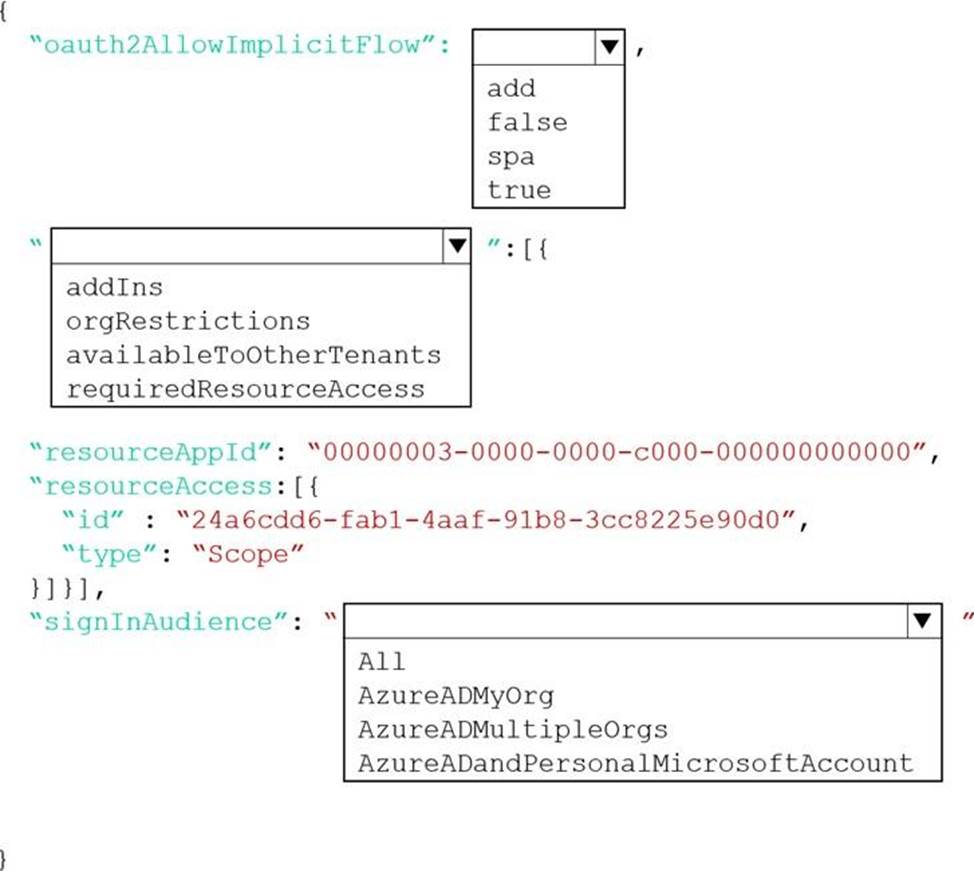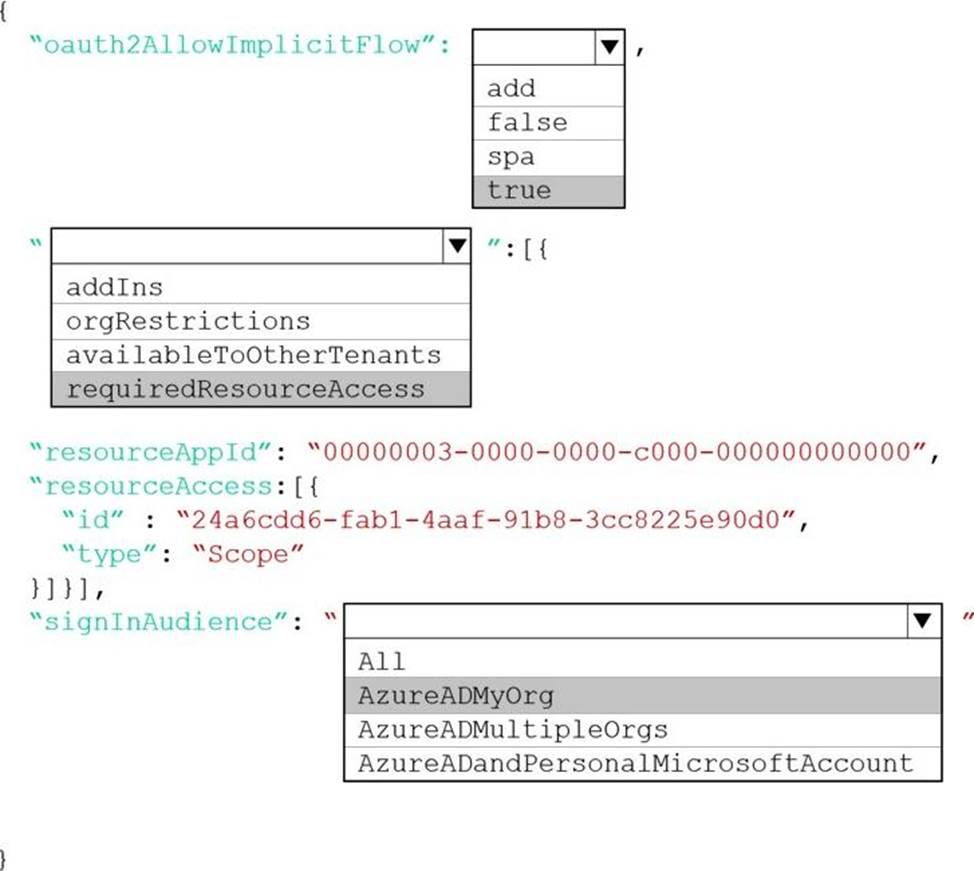HOTSPOT
You have a single page application (SPA) web application that manages information based on data returned by Microsoft Graph from another company's Azure Active Directory (Azure AD) instance.
Users must be able to authenticate and access Microsoft Graph by using their own company's Azure AD instance.
You need to configure the application manifest for the app registration.
How should you complete the manifest? To answer, select the appropriate options in the answer area. NOTE: Each correct selection is worth one point.


Explanation:
Graphical user interface, text, application, email
Description automatically generated
Box 1: true
The oauth2AllowImplicitFlow attribute Specifies whether this web app can request OAuth2.0 implicit flow access tokens. The default is false. This flag is used for browser-based apps, like JavaScript single-page apps.
In implicit flow, the app receives tokens directly from the Azure Active Directory (Azure AD) authorize endpoint, without any server-to-server exchange. All authentication logic and session handling is done entirely in the JavaScript client with either a page redirect or a pop-up box.
Box 2: requiredResourceAccess
With dynamic consent, requiredResourceAccess drives the admin consent experience and the user consent experience for users who are using static consent. However, this parameter doesn't drive the user consent experience for the general case.
resourceAppId is the unique identifier for the resource that the app requires access to. This value should be equal to the appId declared on the target resource app. resourceAccess is an array that lists the OAuth2.0 permission scopes and app roles that the app requires from the specified resource. Contains the id and type values of the specified resources.
Example:
"requiredResourceAccess": [
{
"resourceAppId": "00000002-0000-0000-c000-000000000000",
"resourceAccess": [
{
"id": "311a71cc-e848-46a1-bdf8-97ff7156d8e6",
"type": "Scope"
}
]
}
],
Box 3: AzureADMyOrg
The signInAudience attribute specifies what Microsoft accounts are supported for the current application. Supported values are:
AzureADMyOrg - Users with a Microsoft work or school account in my organization's Azure AD tenant (for example, single tenant)
AzureADMultipleOrgs - Users with a Microsoft work or school account in any organization's Azure AD tenant (for example, multi-tenant)
AzureADandPersonalMicrosoftAccount - Users with a personal Microsoft account, or a work or school account in any organization's Azure AD tenant
